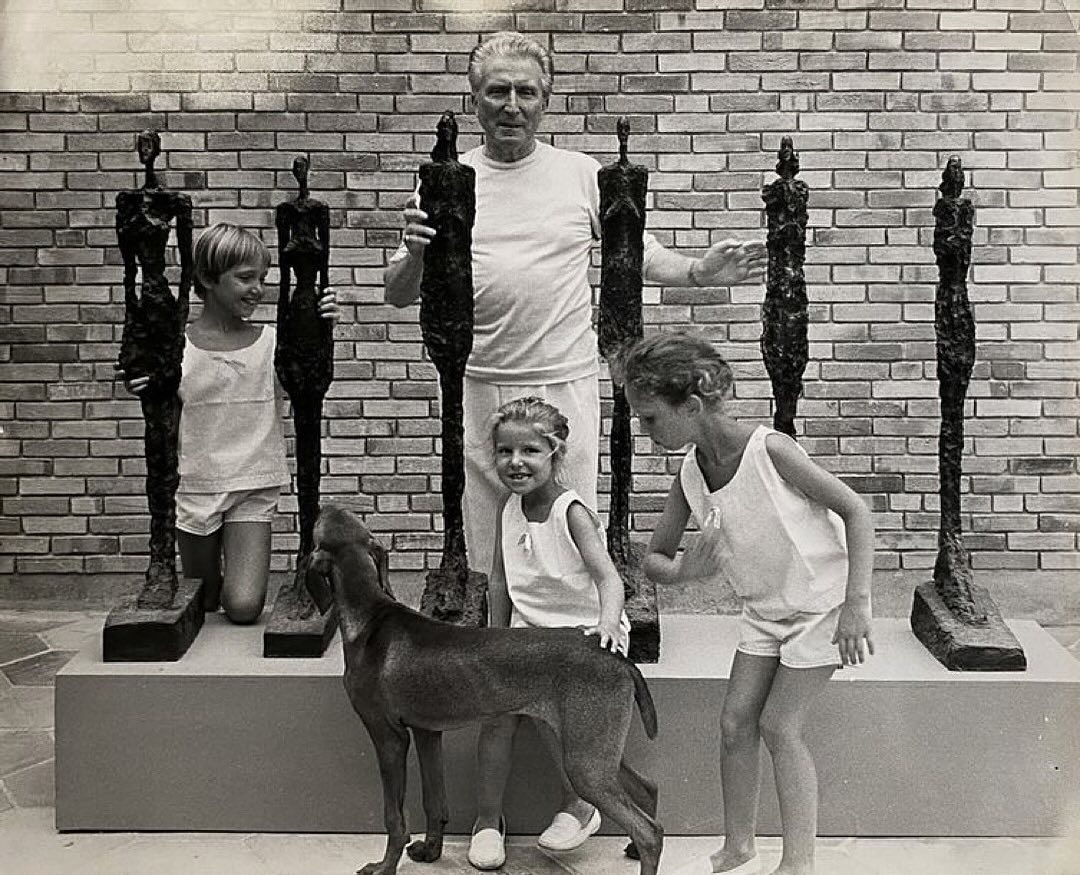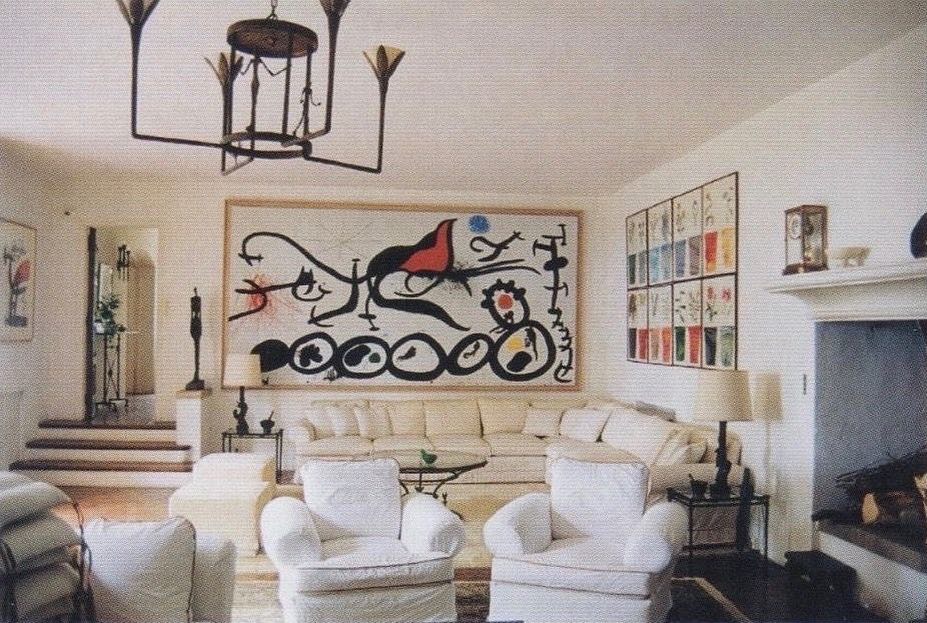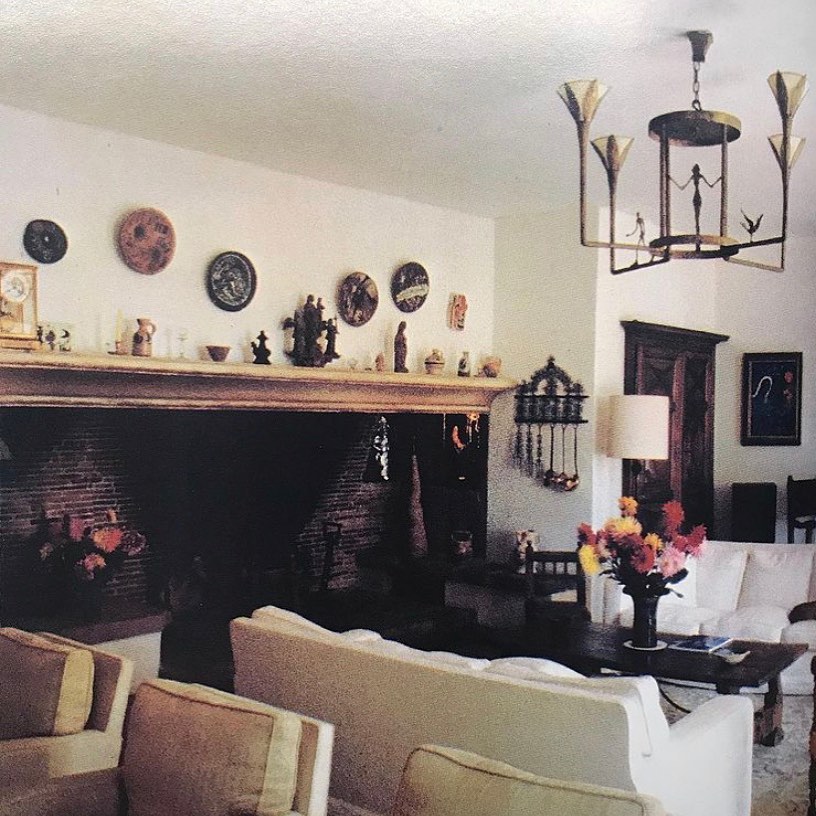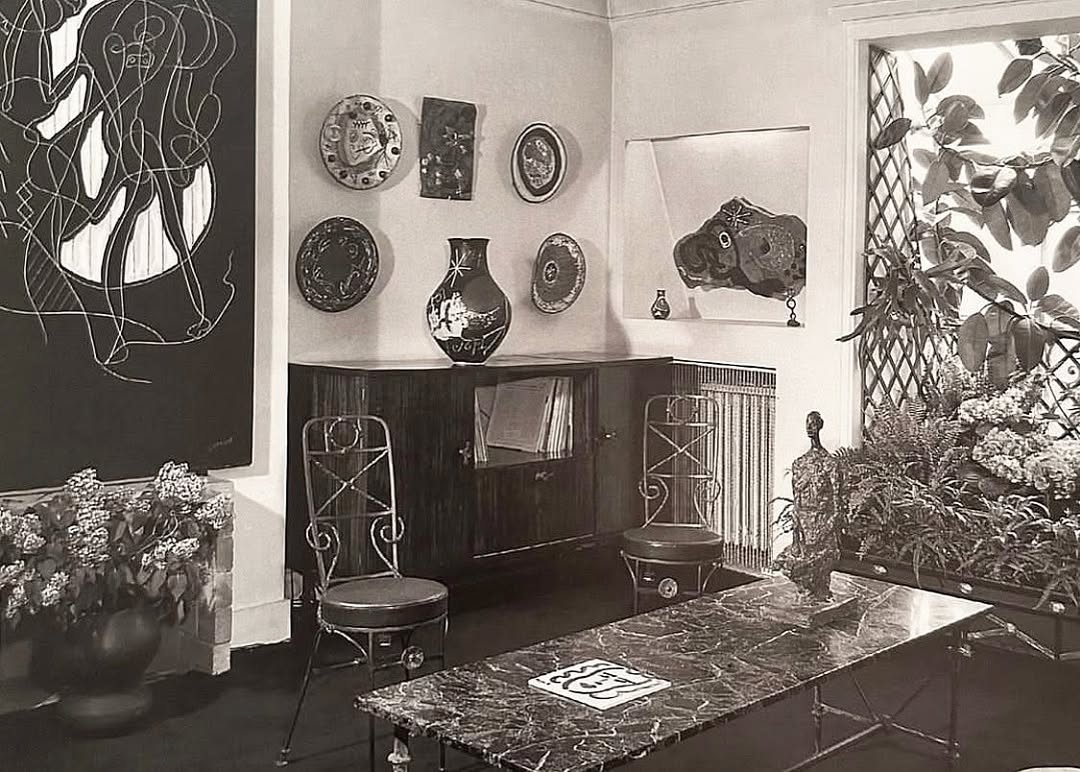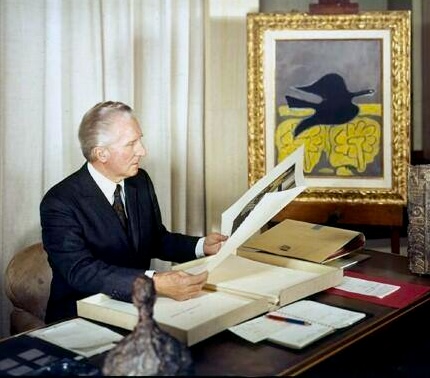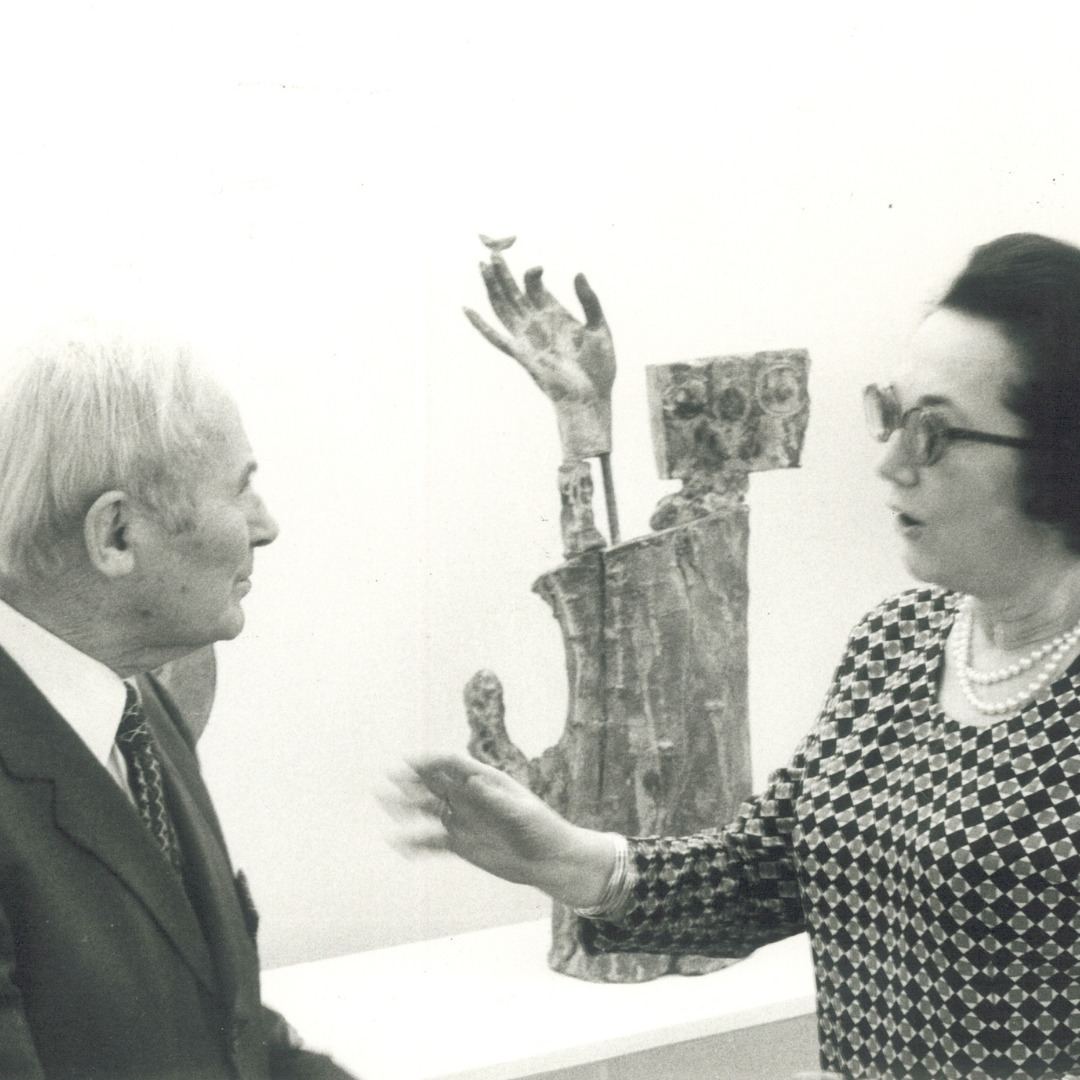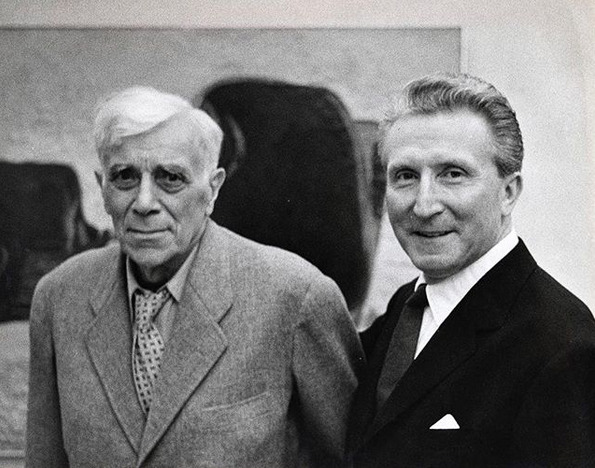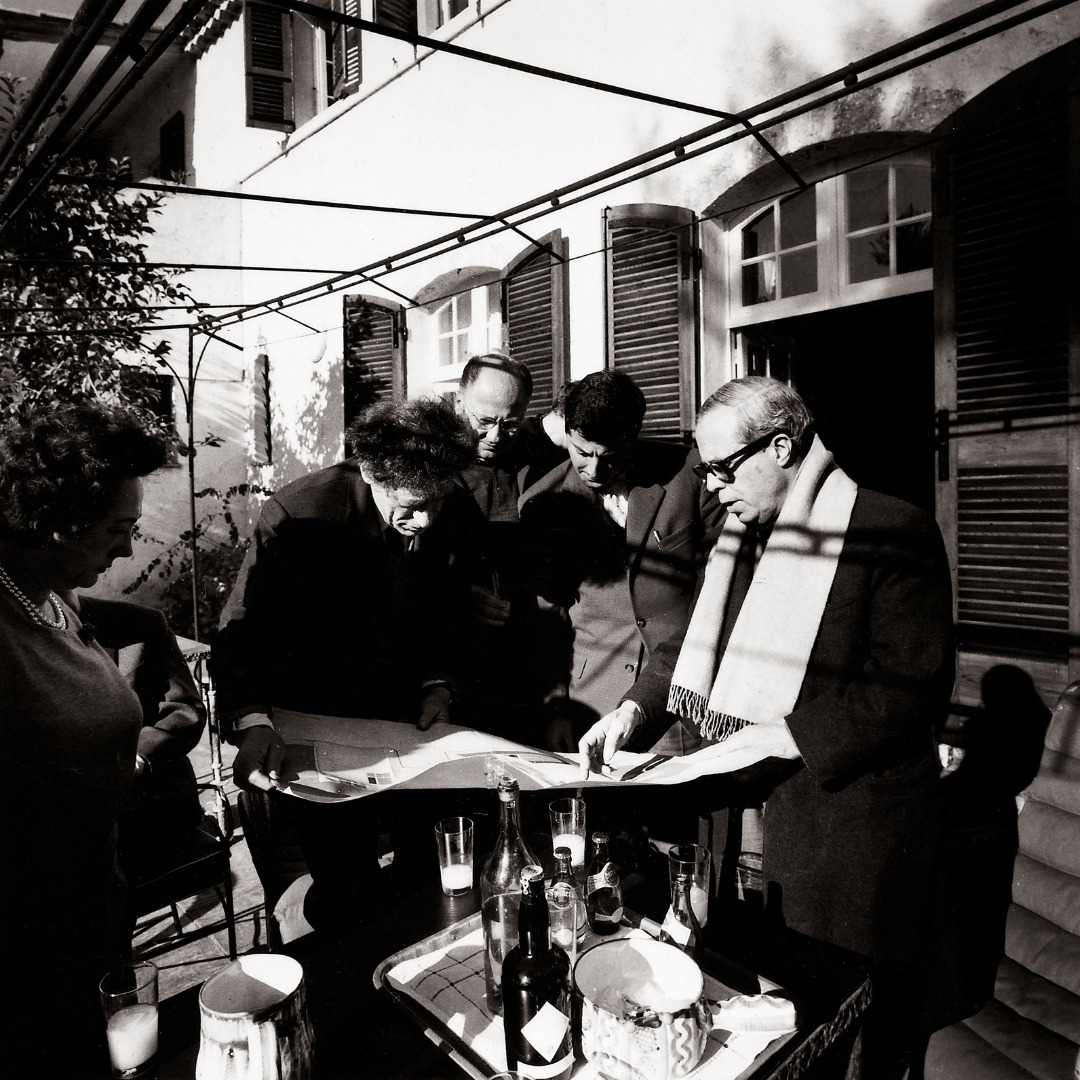The Collector: Aimé and Marguerite Maeght
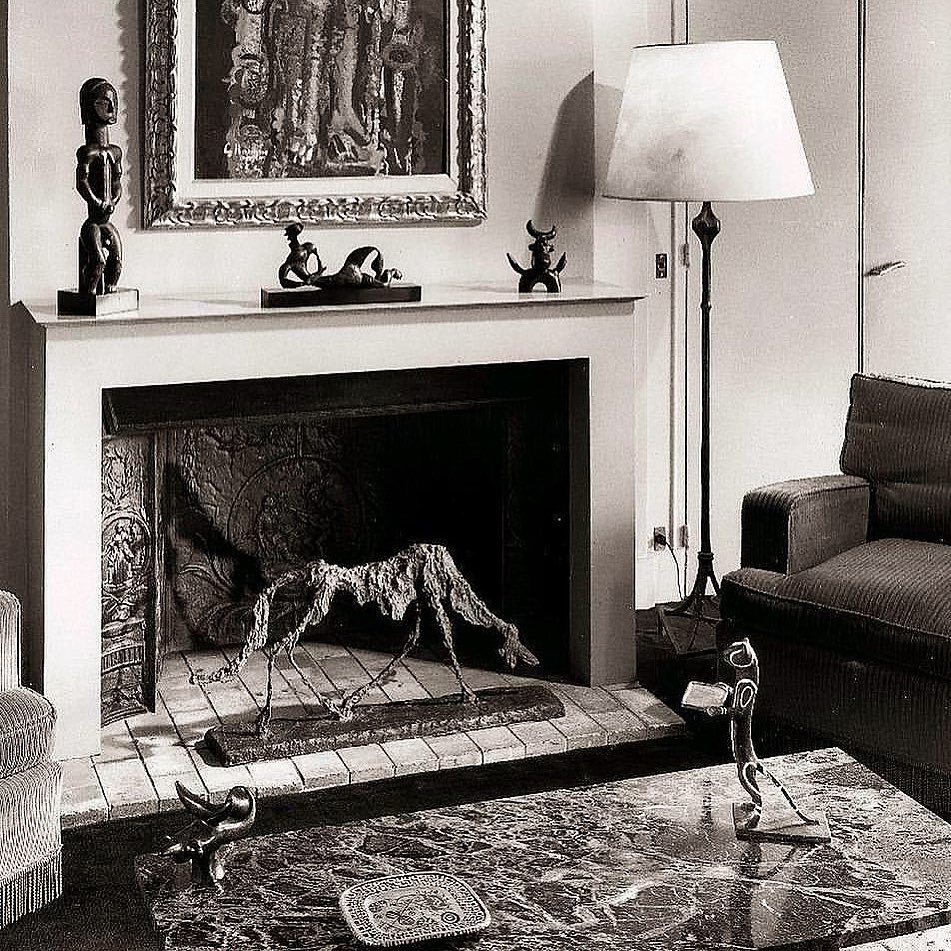
The Collector09.17.2025
Joan Miró once said that Aimé Maeght had “a personality that will leave its mark on the artistic world of the 20th century.” [1] Indeed, alongside his wife, Marguerite, Aimé would be a preeminent post-war French art dealer, publisher, and collector.
Aimé spent his youth fleeing the horrors of the First World War, eventually landing in Southern France. As a pre-teen, he trained as a lithographic draftsman and poster designer. In 1926, he began his career at the Robaudy printing house in Cannes. Two years later, he married Marguerite Devayen, born into a family of dealers and printers. In between wars, the couple opened a business selling radios, electronic goods, and modern furniture under the name Arte. Aimé installed a printing press in the back room from which he published a literary and arts magazine called Pierre à Feu.
With Aimé in the army during World War II, Marguerite struggled to maintain the printing studio, so she focused on selling paintings that had been brought in to be reproduced. One such work was a concert programme illustrated by Pierre Bonnard, which was put on display and sold. (This sale has been attributed to Aimé, but in the Royal Academy of Arts’ 2008 catalogue for a survey of Maeght and his associated artists, the couple’s granddaughter, Isabelle, asserts that it was Marguerite who sold the Bonnard.) [2]
“Marguerite Maeght was a fantastic salesman,” said Gustav Zumsteg, a Zurich collector and textile tycoon. “I bought my first picture there during the war - a Bonnard landscape. I stayed for lunch. Mrs. Maeght was extraordinary, very intelligent, very human. Artists loved her and she took care of them. She played an absolutely essential role in Maeght's success.” [1]
After opening the Galerie Arte in Cannes in 1937, by 1945, Aimé was itching to expand to Paris. The Galerie Maeght at 13 rue de Téhéran was inaugurated with a solo exhibition of work by Henri Matisse, whom the Maeghts had befriended during the war years. In subsequent years, individual exhibitions devoted to artists such as Georges Braque, Joan Miró, Fernand Léger, Alexander Calder, Marc Chagall, and Alberto Giacometti established the gallery’s prestige.
The Maeghts supported artists’ desires to expand their practices. Said Miro, “Risky though it has sometimes been, Maeght always listened and gave all his support so that a project would go forward.” [Ibid] From 1946 to 1958, Galerie Maeght staged a series of exhibitions called “Sur quoter ours,” designed to promote contemporary mural-sized paintings in the decoration of modern rooms. The Galerie also mounted major thematic exhibitions “Le noir est une couleur” (1946) and “Le Surréalisme en 1947,” organized in collaboration with the Surrealists André Breton and Marcel Duchamp.
Publishing activities were an integral part of the gallery’s business. Each major exhibition was accompanied by an issue of the in-house periodical “Derrière le miroir,” designed as illustrated and informative large-format collectibles. They also published several short-lived but influential periodicals that fostered collaborations between artists and writers.
After the death of their son, Bernard, in 1953, the couple’s artistic community encouraged them to channel their grief into a project. “Georges Braque encouraged me to undertake something that surpasses my sorrow: a place of modern art among thyme and rosemary,” Aimé said. [3] Léger encouraged them to visit American institutions like the Solomon R. Guggenheim Foundation, the Barnes Collection and the Phillips Collection. In 1964, the couple established France’s first private art foundation, the Fondation Marguerite et Aimé Maeght, in Saint-Paul-de-Vence.
The Foundation itself was designed by Spanish Catalan architect Josep Lluís Sert, who modeled the structure after the studio he designed for Miró. It is built like a French village, open and airy. Commissioned artworks include sculptures by Giacometti in the courtyard, a labyrinth by Miró, monumental mural mosaics by Chagall and Pierre Tal-Coat, a pool designed by Braque, and a mechanical fountain designed by Pol Bury. The Maeghts financed the project and bequeathed a significant portion of their private collection, comprising more than thirteen thousand paintings, sculptures, and works on paper, to the foundation.
In the ’70s, Maeght opened new branches of the gallery in Zurich and Barcelona. From 1968 to 1975, Marguerite led the restoration of the Sainte Roseline chapel in the commune of Les Arcs-sur-Argens, asking friends like Marc Chagall and Diego Giacometti to create works for this 11th-century chapel. [4] Marguerite died in 1977 and Aimé in 1981. [5] The Galerie Maeght continues to operate in Paris, directed by Isabelle Maeght, and the family still runs a print shop.
SOURCES
[1] Heller Anderson, Susan. “An Artful Retreat By The Mediterranean.” The New York Times, May 17, 1891
https://www.nytimes.com/1981/05/17/magazine/design-an-artful-retreat-by-the-mediterranean.html
[2] Behind the Mirror: Aimé Maeght and his Artists: Bonnard, Matisse, Miro, Calder, Giacometti, Braque. Royal Academy of Arts, London, 2008
[3] Maeght, Yoyo. “Maeght Foundation” https://maeght.myshopify.com/blogs/fondation-maeght/expositions
[4] “The angels’ meal, Saint Roseline Chapel, les arcs-sur-argens, mosaic by Marc Chagall (1974 - 1975).” Marc Chagall. (n.d.). https://www.marcchagall.com/en/catalogue-raisonne/mosaic/angels-meal-saint-roseline-chapel-les-arcs-sur-argens-1975
[5] Fraser, Gerald C. “Aimé Maeght Dies.” New York Times, Sept. 7, 1981. https://www.nytimes.com/1981/09/07/obituaries/aime-maeght-dies-art-dealer-was-75.html
Image: Works by Joan Miró, Alberto Giacometti, Diego Giacometti, and Henry Moore in the Avenue Foch living room.
